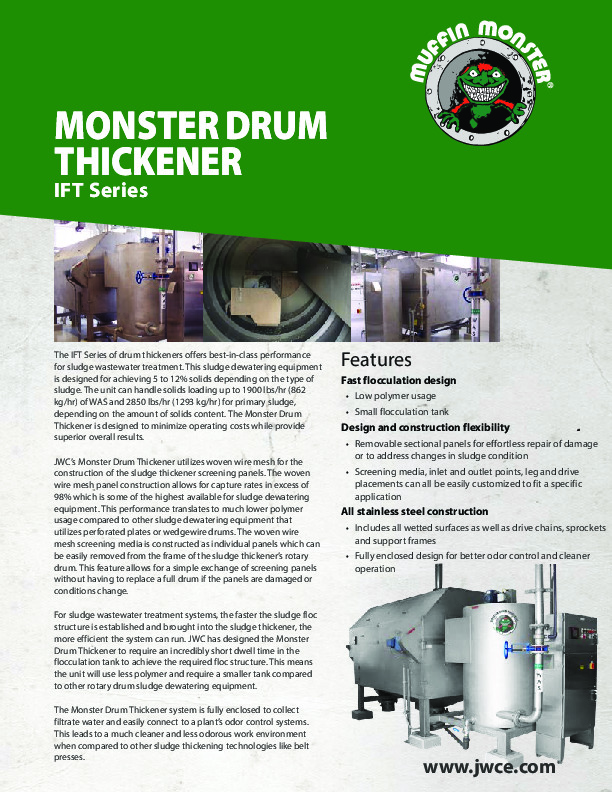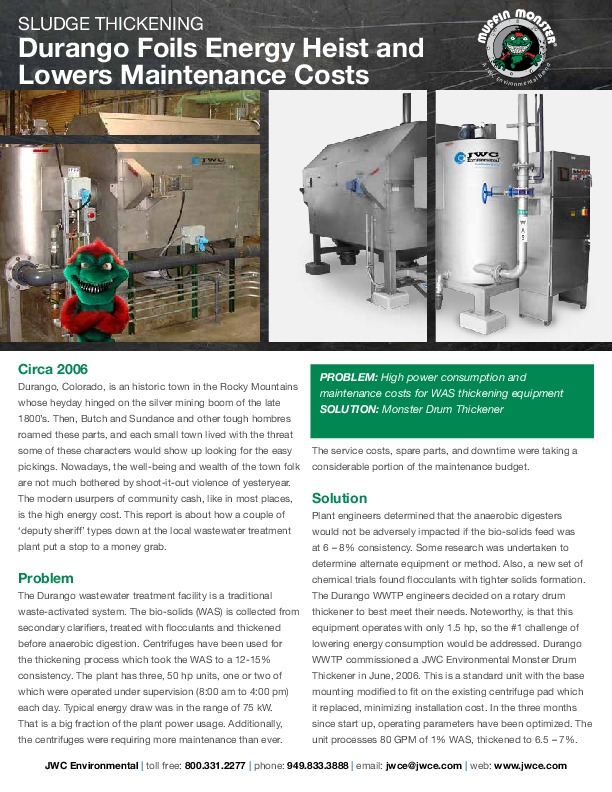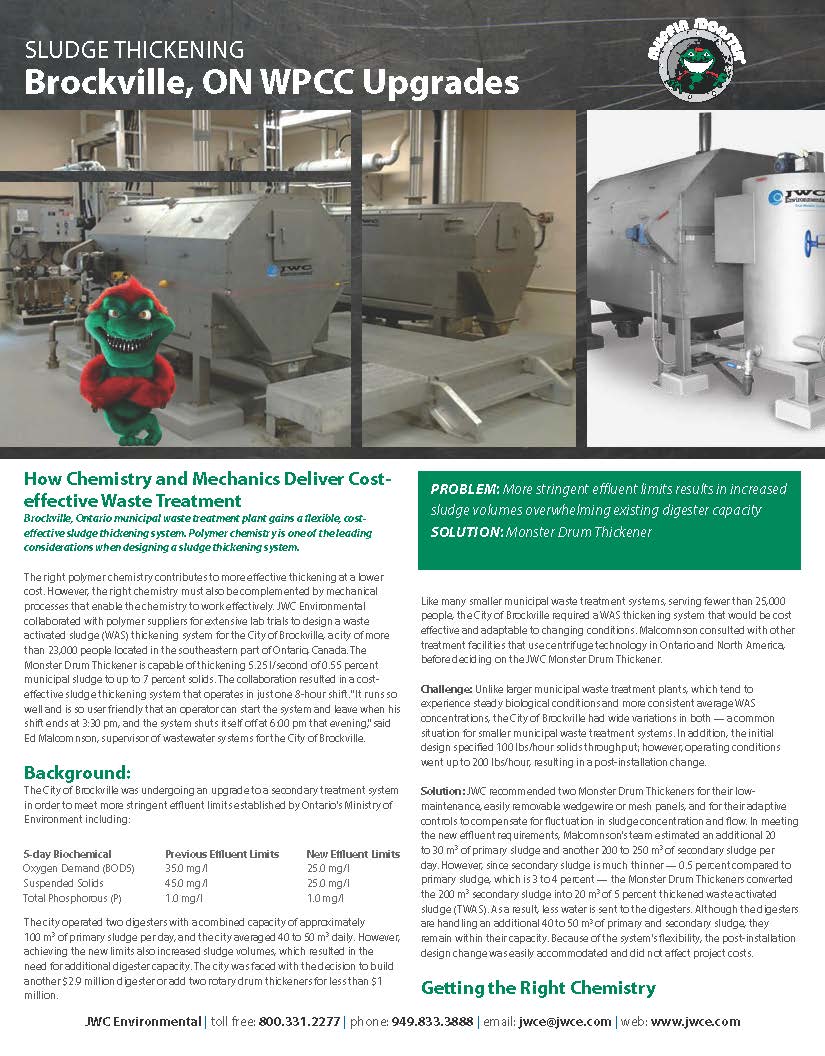IFT Internally Fed Rotary Drum Sludge Thickener
| By Rhonda Williams | 0 Comments

| By Rhonda Williams | 0 Comments

| By Rhonda Williams | 0 Comments

| By Rhonda Williams | 0 Comments

| By Rhonda Williams | 0 Comments

The City of Brockville in Ontario, Canada was undergoing an upgrade to a secondary treatment system in order to meet more stringent effluent limits established by Ontario’s Ministry of Environment. However, achieving the new limits also increased waste activated sludge (WAS) volumes, which resulted in the need for additional digester capacity. The city was faced with the decision to build another $2.9 million digester or add two rotary drum thickeners for less than $1 million to process the additional sludge.
Unlike larger municipal waste treatment plants, which tend to experience steady biological conditions and more consistent average waste activated sludge (WAS) concentrations, the City of Brockville had wide variations in both — a common situation for smaller municipal waste treatment systems. In addition, the initial design specified 100 lbs/hour solids throughput; however, operating conditions went up to 200 lbs/hour, resulting in a post-installation change.
JWC recommended two Monster Drum Thickeners for their low maintenance, easily removable wedgewire or mesh panels, and for their adaptive controls to compensate for fluctuation in sludge concentration and flow. In meeting the new effluent requirements, Malcomnson’s team estimated an additional 20 to 30 m3 of primary sludge and another 200 to 250 m3 of secondary sludge per day. However, since secondary sludge is much thinner — 0.5 percent compared to primary sludge, which is 3 to 4 percent — the Monster Drum Thickeners converted the 200 m3 secondary sludge into 20 m3 of 5 percent thickened waste activated sludge (TWAS). As a result, less water is sent to the digesters. Although the digesters are handling an additional 40 to 50 m3 of primary and secondary sludge, they remain within their capacity. Because of the system’s flexibility, the post-installation design change was easily accommodated and did not affect project costs.
“Our system is adaptable to allow higher throughput because we feed the sludge into the screens in a proprietary pattern that separates the water more quickly than other similar WAS thickening systems,” said Bert Irwin, of JWC “The unique pattern allows us to treat lower concentrations at higher flows.”